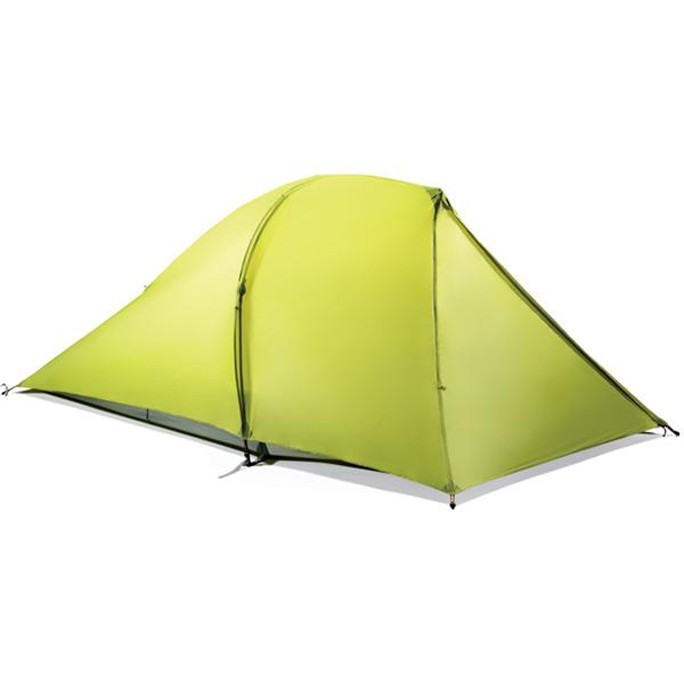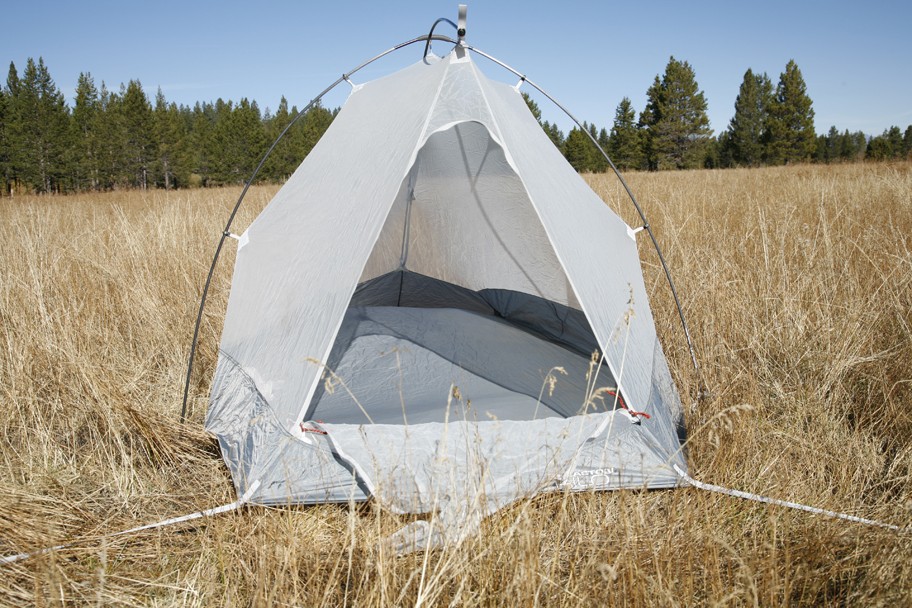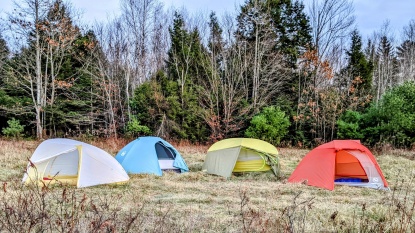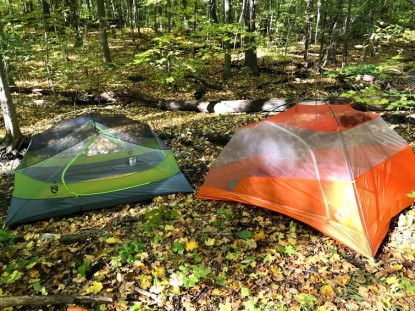Easton Kilo 2 Review
Our Verdict
Our Analysis and Test Results
Livability
The Kilo is the least comfortable tent we've tested. It has the lowest peak height (35"), the smallest vestibule (5.4 sq. ft.), the smallest floor area (26 sq. ft.), and the smallest door of all 24 two-person tents we've tested. It also feels much smaller than many similar tents that only slightly larger. Two people can fit inside but it's even less comfortable than other small ultralight tents. The door zipper is configured in the worst way possible: instead of a C-shape it uses an upside down U-shape that leaves the door sitting in the dirty or muddy vestibule. We've found that this door design not only puts more wear and tear on the lightweight mesh material but, depending on how tall the other person is and how good you are at yoga, it can also require the other person to move over in order for you to get out. There may not be enough space by the door to squeeze out without squashing the other person's head.
There are no vents and thus the Kilo is more prone to condensation than most tents. The minimalist pole design is less effective than average at tensioning the inner tent walls; zipping the door requires two hands.
Weather Resistance
After the MSR Carbon Reflex 2, the Kilo 2 is the least weather-resistant tent we've tested. The pole design is weak, like all ultralight tents, and there are no side, rear, or front guy points, a drastic omission that greatly reduces the tent's performance in high winds. Many other similar tents have 3-7 more guy points than the Kilo. Unlike many similar tents, the Kilo's inner tent does not connect to the outer tent, the walls tend to sag in more than average and condensation transfers from the outer to the inner tents easier. The cross pole lies midway up the tent instead of at the front (we believe this is weaker) so the two front ground level, inner tent guy points extend roughly a foot from the inner tent via a thin strip of webbing (see photo below). Although we haven't had any trouble with this feature, we are concerned about its long-term durability. In general, the Kilo has what we believe to be unrefined geometry. It's harder to achieve a tight pitch than most tents we've tested. Except in conditions with bright sun with dry air, the walls or vestibule tend to sag more than other tents. By moving the cross pole from the front of the tent, by the door, farther back, they reduced the static strength of the front of the tent. There are no guypoints on the front either, so the front is remarkably affected by wind. We do not believe the Kilo 2 is suitable for use in three-season storms. The Kilo's floor and fly fabric use a polyurethane coated ripstop nylon that's a significant step down, in many ways, from silicone impregnated fabrics. See our Buying Advice Article for more information on tent fabrics.
Weight and Packed Size
The Kilo 2's poles, fly, and inner tent weigh 35.6 ounces, or 2 lb. 4 oz., without stakes or stuff sacks. In comparison the lightest tent we've tested weighs 31 ounces. Part of the Kilo's weight savings comes from its two Easton carbon fiber AirLock poles, which weigh a paltry 5.7 ounces. In comparison, the Big Agnes Fly Creek's poles weigh 4 oz. more and the Hilleberg Anjan's poles weigh nearly 6 oz. more. We believe the carbon sections of the Kilo's poles are as strong or stronger than other top quality aluminum poles. While setting up the tent in the dark one of our testers broke the cross pole at the aluminum joint that lies at the top of the tent. This was surprising, but doesn't necessarily show that the poles, or even that section, is weaker than other poles. The AirLock connectors are definitely not as easy to use as traditional shock cord poles, but this is a very minor drawback.
The Kilo comes with top quality 6" Easton Nano Nail stakes that are the best stakes that come included with any tent tested (the Tarptent Double Rainbow also ships with the same stakes). Nonetheless, Easton could step it up even further by including their amazingly lightweight and strong Full Metal Jacket stakes.
The Kilo packs down very small, but not as small as the Terra Nova Solar Photon 2, and much lager than ultralight tents.
Adaptability
The Kilo is one of several tents that receive a score of zero in this category. The Kilo must be pitched in the exact same way every time, which can be a drawback for long distance hikers or anyone forced to camp in sites that don't allow an optimal pitch.
Best Application
Lightweight backpacking in protected areas.
Value
The Kilo 2 can be found for slightly less than the average ultralight tent tested but we don't believe its reduced performance is worth the cost savings. See how the Kilo compares to other backpacking tents in our Price versus Value Chart.








